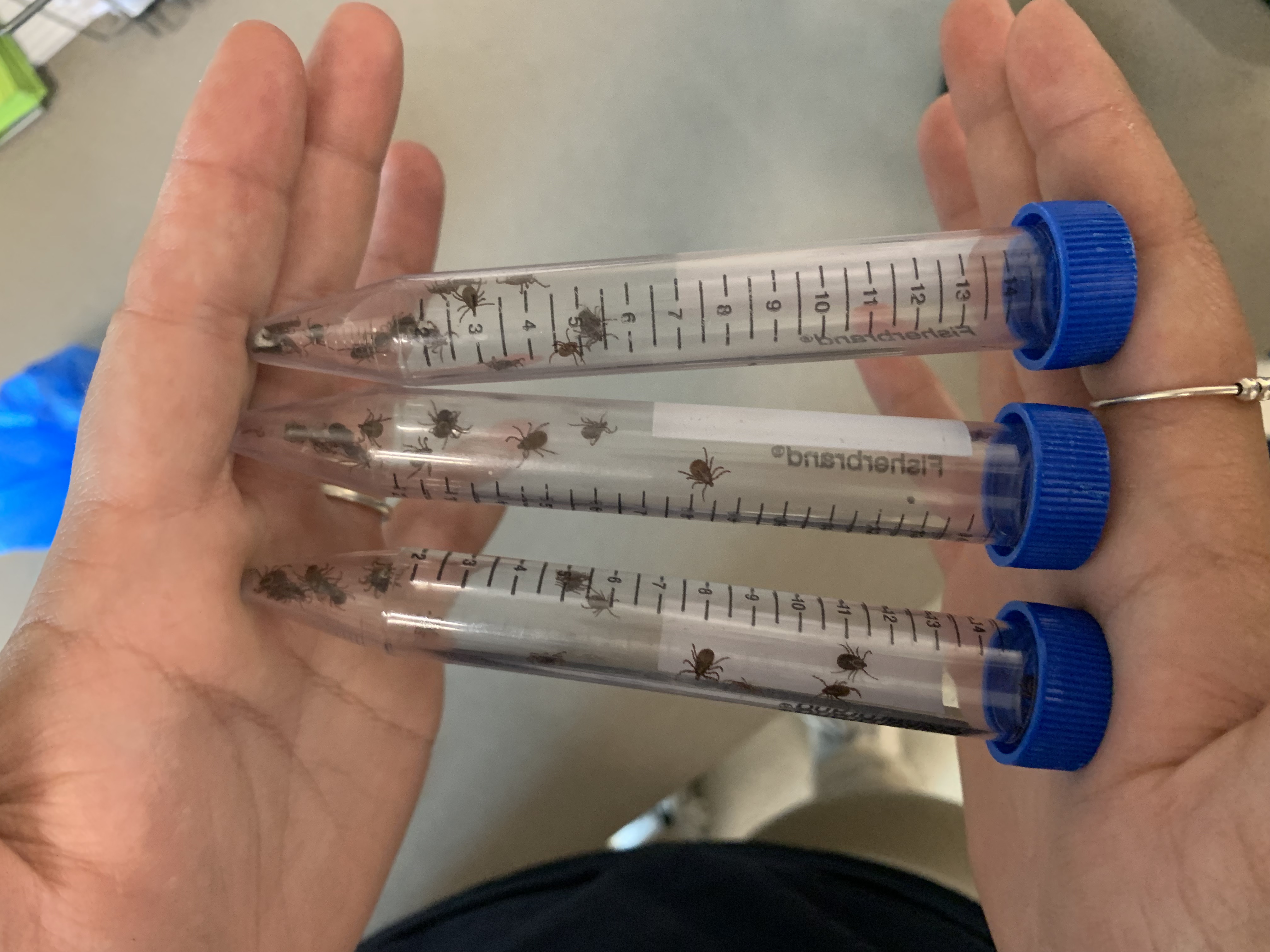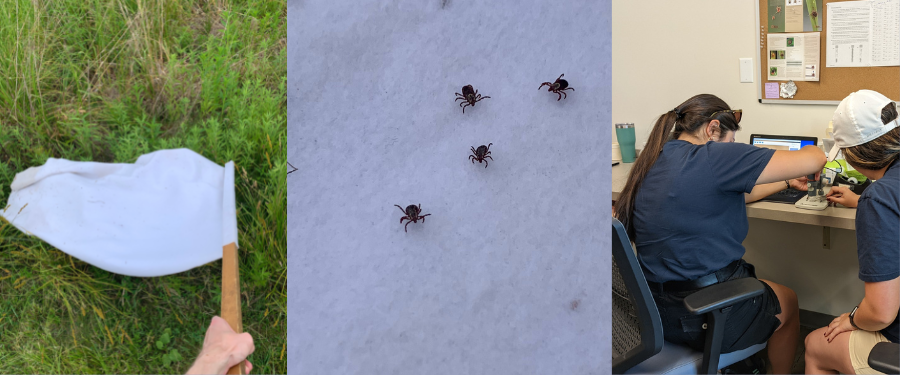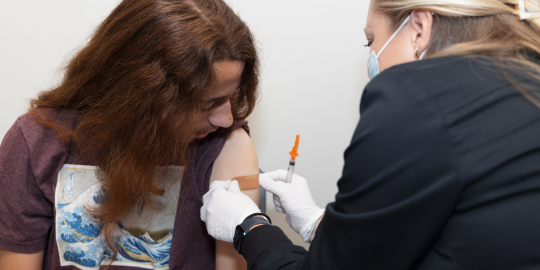Ticks
Submit your tick to the Tick Tracker
These Aren’t the Ticks You Grew Up With in Lorain County.
Tiny Ticks: A New Threat in Our County
For years, people were most familiar with dog ticks – those larger, easier-to-spot ticks you might have seen after a walk in the woods. Lorain County Public Health has been monitoring tick species and populations. A different tick species has migrated to Northeast Ohio: the blacklegged tick.
The difference is critical: Dog ticks are larger and don't carry Lyme disease. But blacklegged ticks are tiny and very hard to see – often no bigger than a poppy seed in their nymph stage – and they can carry the bacteria that cause Lyme disease.
Data from Lorain County Public Health confirms this shift: From 2019 to 2024, Lorain County has seen 30 confirmed cases of Lyme disease, with a startling 19 of those cases occurring in 2024. That's a significant jump from our previous 5-year average of 6.2 cases per year. Lyme disease is clearly here – and we need to know the signs and how to protect our families.
Learn About Ticks
- Ticks are tiny – especially blacklegged ticks in their nymph and larva stages. These small ticks are most active during the warmer months and are linked to Lyme cases.
- Your own backyard or a favorite park can be a source of ticks, especially if it borders wooded areas or has tall grass.
- Tall grass, leaf litter, and wooded/brushy areas are prime habitats for ticks.
- Know what to look for –
Simple Steps to Stay Safe
- Do a Tick Check: Check your whole body thoroughly after being outside, even in your own yard. This means a head-to-toe check, including "nooks and crannies" and your scalp. Finding and removing ticks early is the best way to avoid getting sick.
- Use Repellents: Use bug spray that is EPA-registered with DEET or picaridin on skin. You can also spray clothes, running shoes, or hiking boots with a tick killer like permethrin – just be sure to follow the directions.
- Maintain Your Spaces: Mow the grass, rake up leaves, and keep areas near woods clear to make it harder for ticks to live there.
- Check Your Pets: Pets can bring ticks indoors! Check your pets after they've been outside and talk to your vet about year-round tick prevention products.
- Expand Your Outdoor Routine: Just as you prepare to spend time outdoors, be sure to spend time afterwards to reduce your risk of a tick bite.
- Toss outdoor clothes directly into a hot dryer for 10 minutes to kill any remaining ticks.
- Shower within two hours of being outdoors to wash off unattached ticks.
- And, make time to do a thorough tick check.
What to Do After a Tick Bite
If you find a tick attached to your skin, remove it as soon as possible.
- Remove the tick with fine-tipped tweezers.
- Get more removal tips: cdc.gov/ticks/after-a-tick-bite/index.html
If symptoms start within several weeks after a tick bite, see your doctor. Tell them about the recent bite, when it happened, and where you likely got the tick.
Know the Signs of Lyme Disease
- Early Symptoms (3-30 days after a bite): Fever, chills, headache, feeling tired, muscle aches, joint aches, or swollen glands.
- The Rash: About 70-80% of infected people get a rash, but not everyone does. It starts at the bite site, usually 3-30 days later. It can grow up to 12 inches across. Sometimes it looks like a "bull's-eye," but it can also be a solid red patch. It might feel warm but rarely itchy or painful. The appearance of this rash can vary widely.
Call 440-322-6367 to talk with Lorain County Public Health about ticks, data and disease. Talk to your doctor if you have concerns about a tick bite or symptoms.
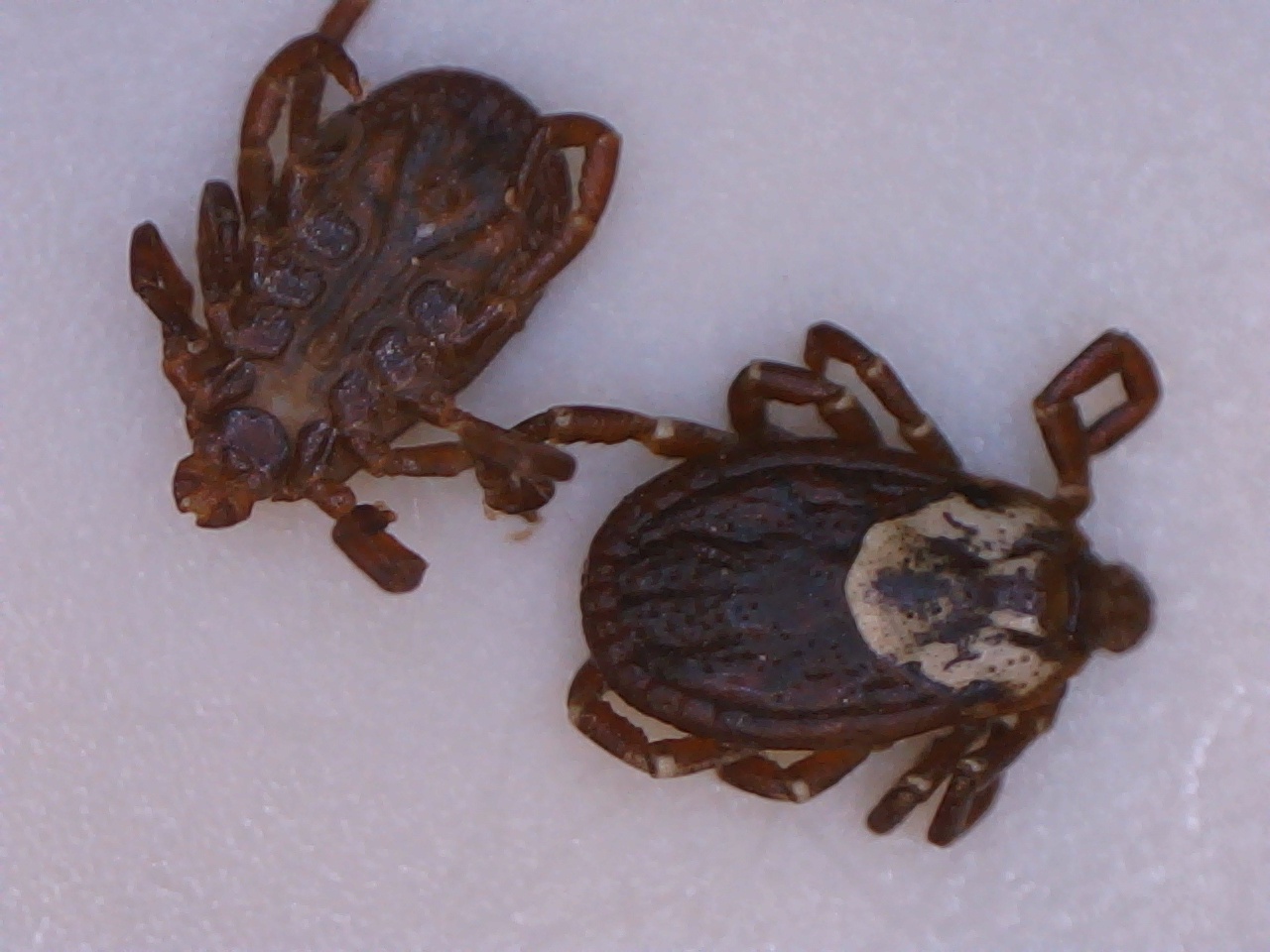
What is LCPH doing about ticks?
LCPH actively monitors ticks to protect people and pets in Lorain County from tickborne diseases.
- We identify local ticks.
After removing a live tick from yourself, your child, or your pet, let us help identify the species. You can submit your tick photos digitally for identification, or call LCPH at 440-322-6367. Ticks may also be brought in a sealed bag or container to 9880 Murray Ridge Rd., Elyria. - We collect ticks.
Each summer, our Environmental Health interns collect ticks through a “flagging” process. This allows us to find ticks in vegetation, determine areas where ticks are most abundant, and collect tick data (species, sex, quantity). Interns are integral to this part of our active monitoring.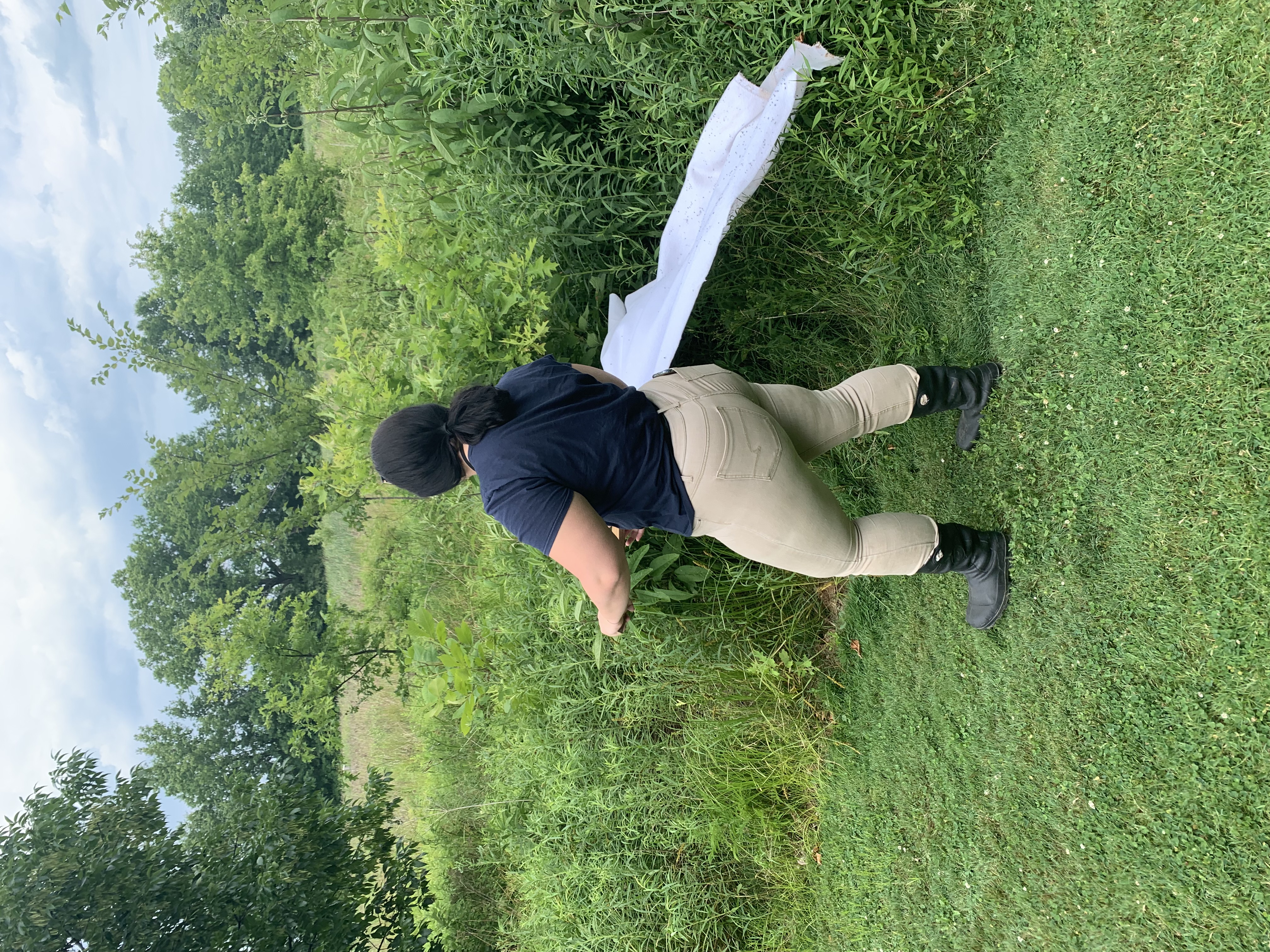
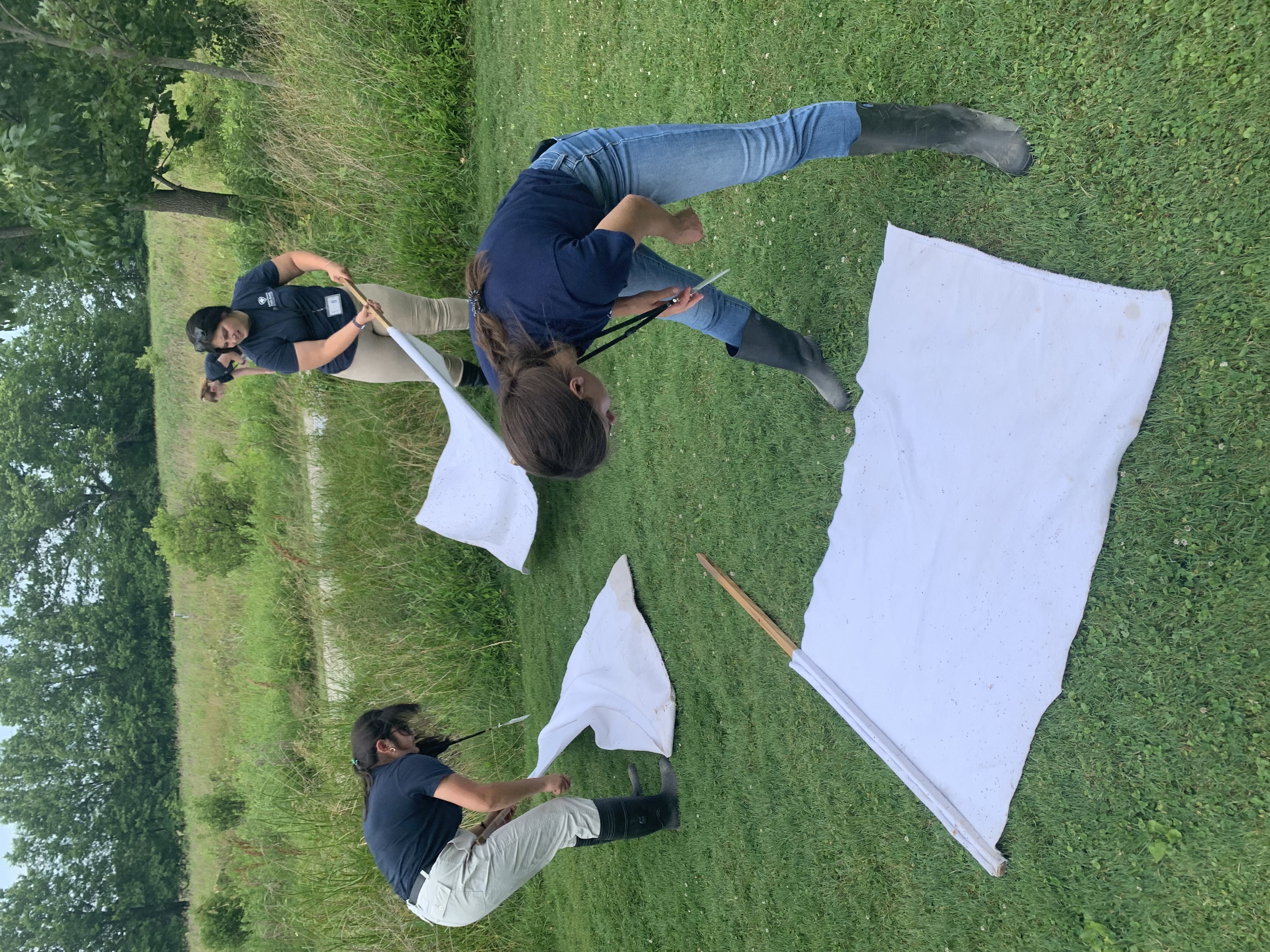
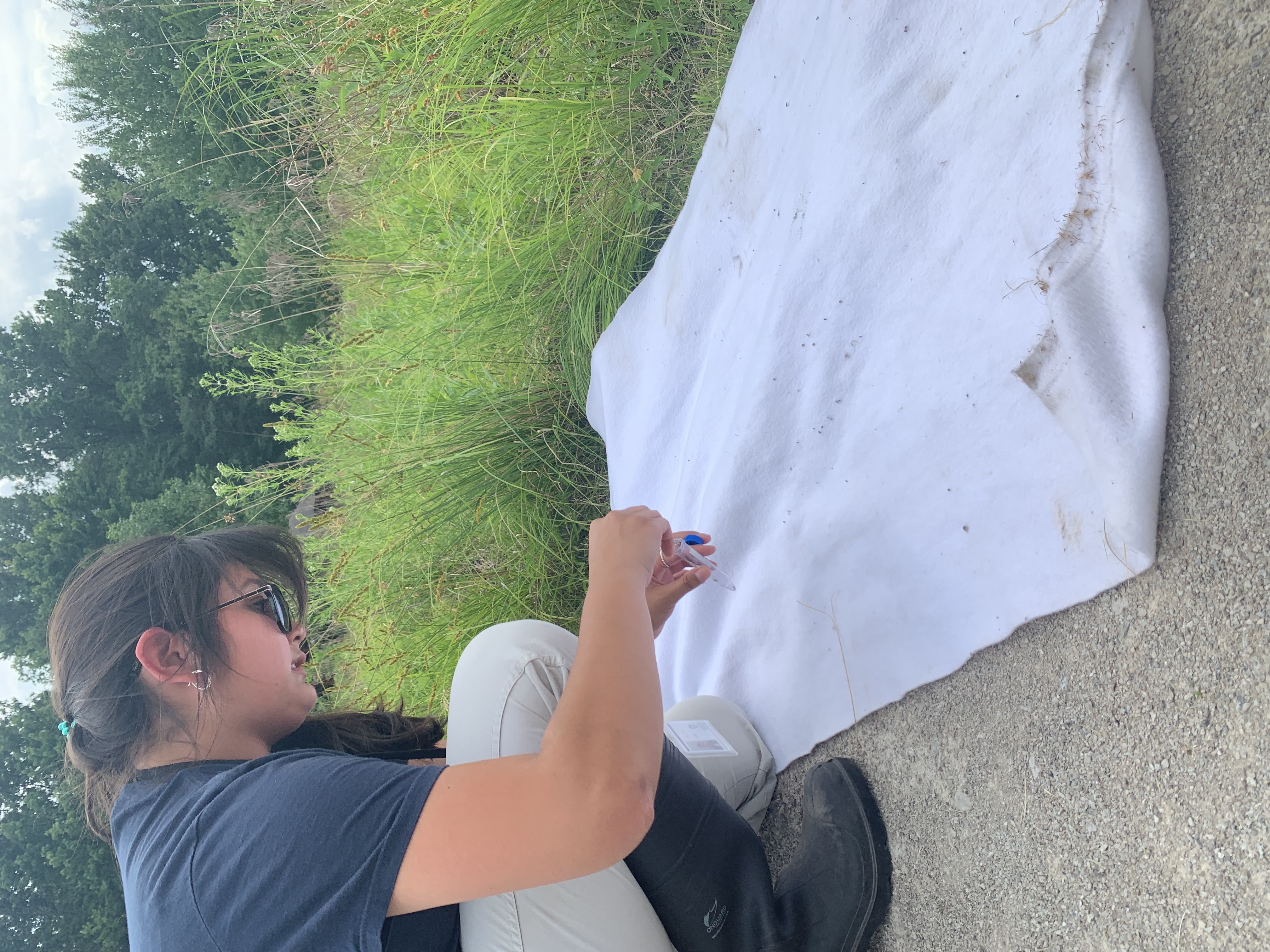
Seasonal internships are available with our Environmental Health and Population Health teams. Check internship job opportunities in February and March, or ask about shadowing experiences via email ph@loraincountyhealth.com. - We send blacklegged ticks for testing.
Blacklegged ticks found by LCPH through active surveillance "flagging" are sent to the Ohio Department of Health's Zoonotic Disease Program to be tested for the bacteria responsible for causing Lyme disease.